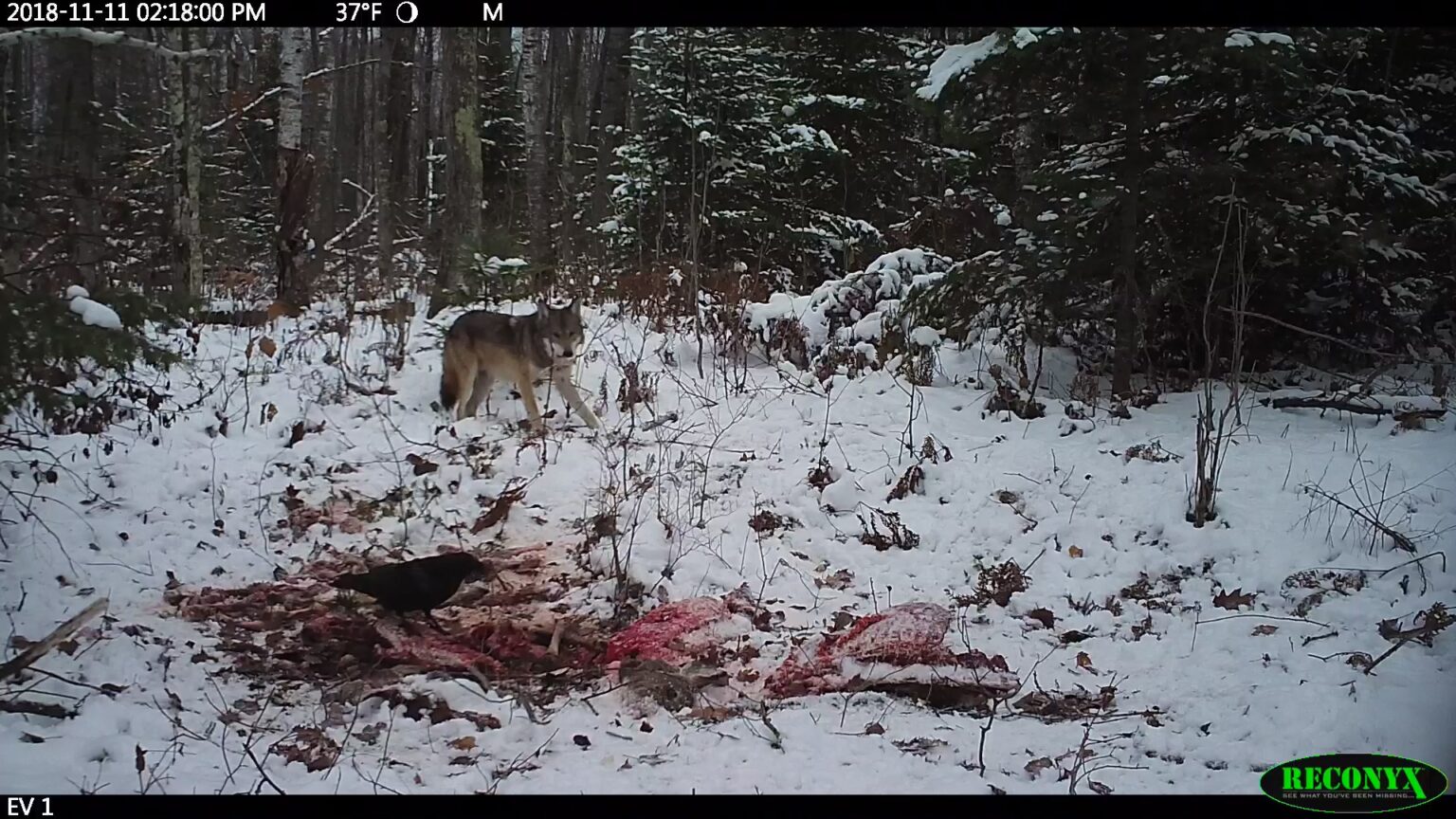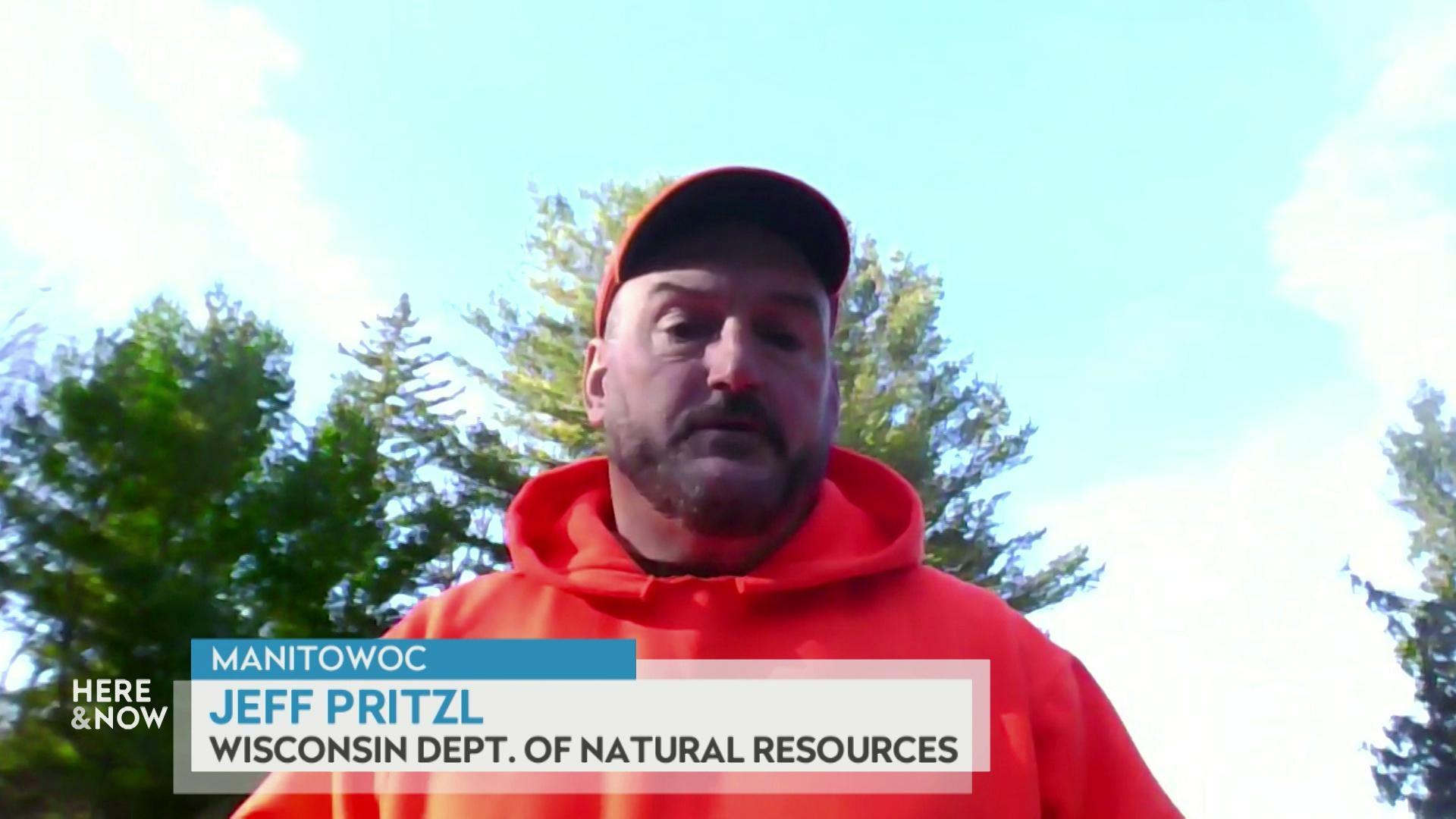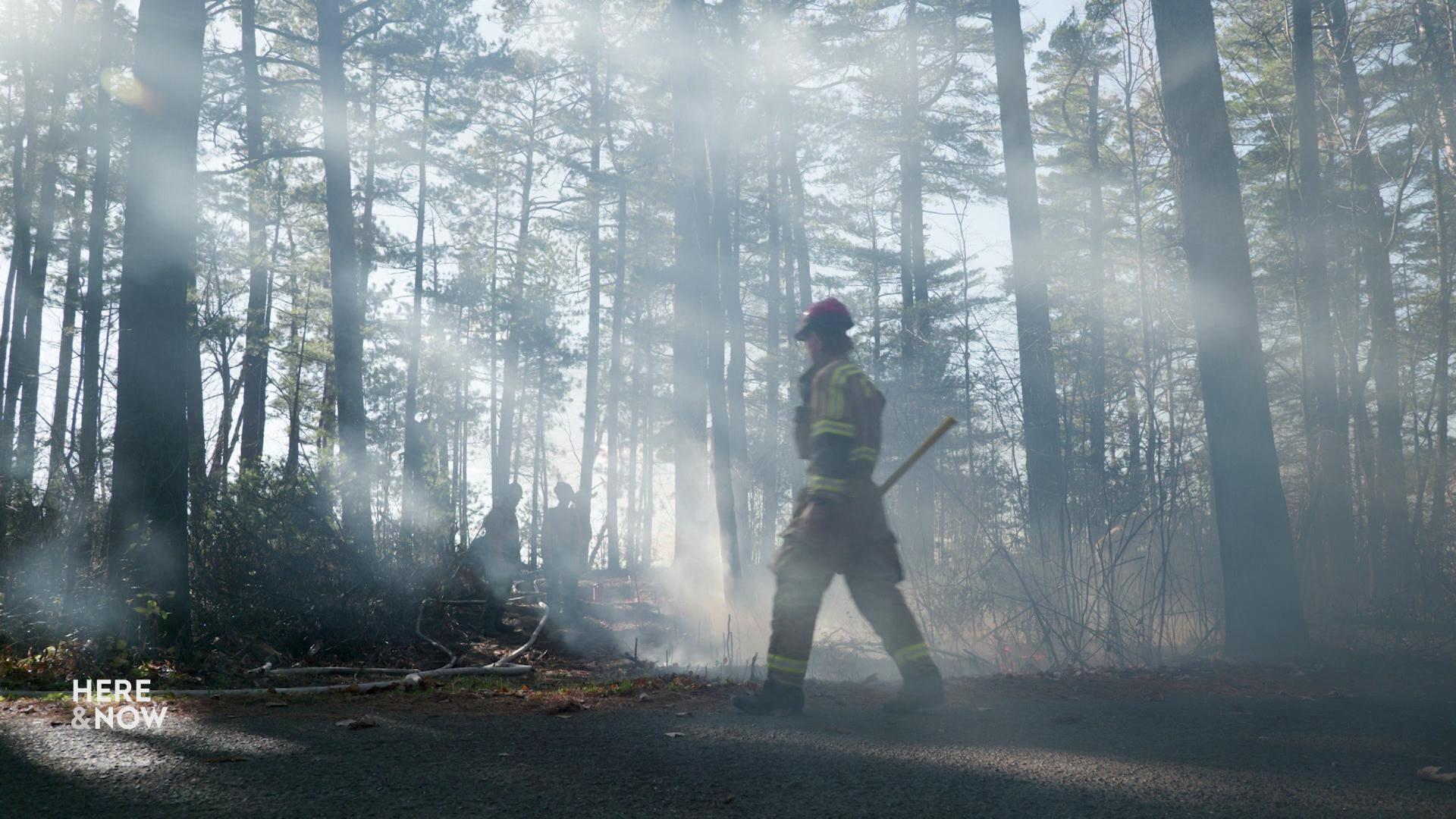First Wisconsin wolf plan since 1999 eliminates state population goal
A draft wolf management plan released by the DNR recommends evaluating conditions in the state's six wolf hunting zones and deciding whether to reduce the local population, keep it stable or allow it to grow.
Associated Press
November 11, 2022

A trail camera photo from Nov. 11, 2018 shows a wolf approaching the carcass of a prey animal in a snowy forest clearing. (Credit: PBS Wisconsin)

MADISON, Wis. (AP) — Wisconsin wildlife officials released their first new wolf management plan in almost a quarter-century but the document doesn’t establish a new statewide population goal, a number that has become a flashpoint in the fight over hunting quotas.
The Department of Natural Resources adopted a wolf management plan in 1999 that calls for capping the statewide population at 350 animals. As the number of wolves in Wisconsin has increased — the DNR released estimates in September showing that the population currently stands at 970 — hunters have used that 350 number to justify generous quotas, much to the chagrin of animal rights advocates.
The draft plan the DNR released Nov. 10 strips hunters of that argument by eliminating a statewide population goal. Instead it recommends the DNR with the help of advisory committee monitor local populations within the state’s six wolf hunting zones and decide whether to reduce the local population, keep it stable or allow it to grow.
Neighboring Minnesota released an updated wolf plan in June that calls for maintaining that state’s wolf population between 2,200 and 3,000 wolves. Recent estimates put the number of wolves in that state at 2,700.
Wisconsin DNR officials wrote that their approach is more flexible without a hard population goal.
“This plan’s goal is focused on a holistic and pragmatic approach to wolf management, conservation and stewardship,” the plan states.
Former Rep. Gov. Scott Walker signed a bill in 2012 establishing an annual fall wolf hunt in the state. The hunt has become one of the most contentious outdoor issues in the state.
Animal advocates argue that the wolf population isn’t strong enough to support hunting and the animal is too majestic to slaughter.
Hunt supporters counter that wolves prey on farmers’ livestock. The DNR paid out more than $3 million between 1985 and 2021 to provide compensation for livestock and hunting dogs killed by wolves, according to the draft plan. Residents of northern Wisconsin have complained, too, that they’re afraid wolves could attack their pets and children.
The fight grew especially ugly in February 2021 after a group known as Hunter Nation won a court order forcing the DNR to hold a hunt that month out of concerns the Biden administration could place wolves back on the endangered species list. The results were chaotic as hunters killed 218 wolves in just four days, blowing past their 119-animal quota.
Animal advocacy groups concerned the February hunt had decimated the population convinced a Dane County judge to block the fall 2021 hunt. In February, a federal judge restored endangered species protections for gray wolves across most of the country, including Wisconsin, making hunting the animal illegal.
But U.S. Fish and Wildlife Service officials could push to remove protections if they deem the population has sufficiently recovered, reactivating Wisconsin’s hunt.
Melissa Smith, executive director of Friends of the Wisconsin Wolf & Wildlife, a wolf advocacy group, said the plan is still too focused on giving hunters kill opportunities and controlling the population. But she said the group was pleased to see the 350-population goal “finally be buried, as it should have (been) 25 years ago.”
Greg Kazmierski, chair of the DNR’s policy board, pressed agency officials at a meeting in January on whether the new management plan would include numeric population goals. He didn’t get an answer and called for the plan to include criteria to trigger higher or lower quotas. The new plan doesn’t include any specific benchmarks.
“I’m not sure (the plan) will defuse any of the fighting,” Kazmierski said. “It depends on how they set the metrics up. Until I know what the metrics are and the public knows what those metrics are, how much dog depredation, how much deer (are) killed (by wolves) is tolerable, it really means nothing. It means we’re not going to manage them at all.”
Other key parts of the plan include:
- Reducing the window for registering wolf kills from 24 hours to eight hours. DNR officials have said the lengthy grace period slowed its tally of February 2021 kill totals and led to zones staying open too long.
- Issuing zone-specific licenses. Right now wolf licenses are valid in any of the state’s six wolf hunting zones. DNR officials wrote in the plan that after some zones close after their quotas are reached hunters shift to zones that remain open, increasing hunter concentration and reducing kill opportunities.
- Educating the public about wolves by sending out emails and texts related to wolf conflicts, public meetings and hunting season updates as well as streamline wolf information on the DNR’s website.
The DNR plans to take public comments on the draft plan for 60 days.
 Passport
Passport











Follow Us